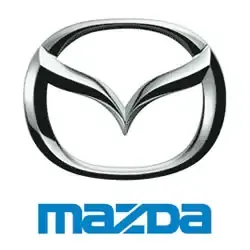Mazda CX-50 Tire Pressure
Most common recommended tire pressure for Mazda CX-50 can range from 35 psi to 36 psi depending on year of production, trim and OEM tire size, but it maybe different for older models. It is imperative to confirm the exact tire inflation for your Mazda CX-50 to ensure safety on the road. Always refer to your vehicle owner's manual for the correct tire pressure designated by vehicle's manufacturer.
Select your Mazda CX-50 production year to see its recommended tire inflation.
| Model Year | Front Tires | Rear Tires |
|---|---|---|
| 2025 Mazda CX-50 | 35 - 36 psi | 35 - 36 psi |
| 2024 Mazda CX-50 | 35 - 36 psi | 35 - 36 psi |
| 2023 Mazda CX-50 | 35 - 36 psi | 35 - 36 psi |
Recommended Tire Pressure for Mazda CX-50
Maintaining the recommended tire pressure for the Mazda CX-50 is paramount for multiple reasons, touching on safety, performance, and efficiency. Firstly, proper tire inflation is crucial for optimal vehicle handling and braking performance, directly impacting the safety of passengers by ensuring the vehicle's responsiveness in avoiding road hazards and during emergency maneuvers. Secondly, tires inflated to the manufacturer's specified pressure exhibit reduced wear, extending their lifespan and ultimately saving the owner from premature tire replacements. This is particularly important given the CX-50's design for both everyday road use and off-the-road capabilities, where uneven wear can significantly diminish performance and safety. Furthermore, correct tire pressure plays a significant role in fuel efficiency; under-inflated tires can increase rolling resistance, leading to higher fuel consumption and additional CO2 emissions. By adhering to the Mazda-recommended tire pressures, CX-50 drivers can not only assure a safer, more enjoyable driving experience but also contribute to environmental conservation through reduced fuel use and tire waste, embodying Mazda's commitment to both performance and eco-friendliness.

All listed guides, data and/or calculations are for informational purposes only. TirePressure.com does not warrant or make any representations regarding the accuracy of or the results of the use of this information. Always refer to vehicle owner's manual for the correct tire pressure configuration.